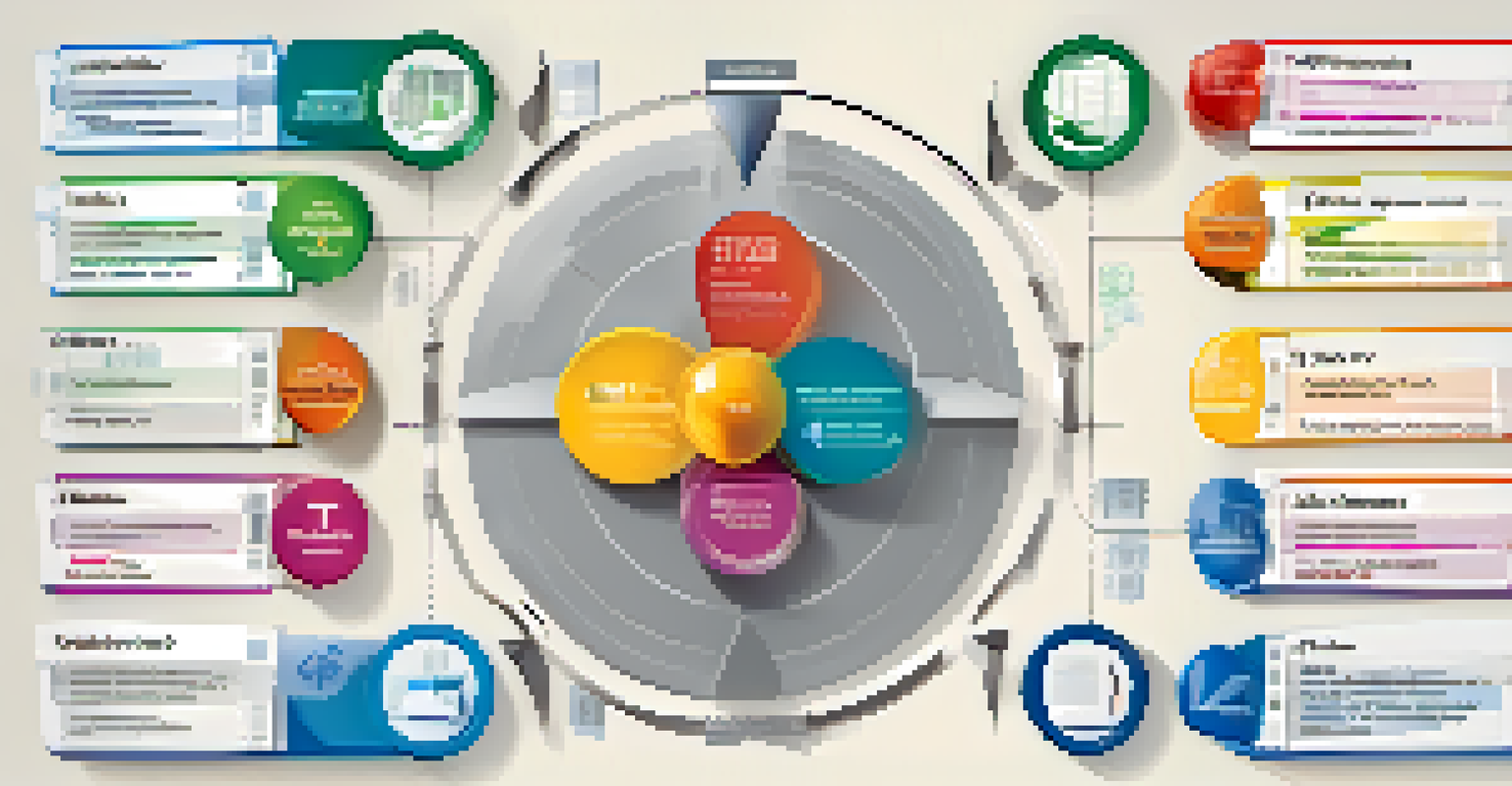Investing in ETFs: A Flexible Option for Diverse Portfolios

What Are ETFs and How Do They Work?
Exchange-Traded Funds, or ETFs, are investment funds that are traded on stock exchanges, much like individual stocks. They typically hold a diversified portfolio of assets, which can include stocks, bonds, or commodities. This structure allows investors to gain exposure to a wide range of securities without needing to buy each one individually.
In investing, what is comfortable is rarely profitable.
One of the key features of ETFs is their ability to offer liquidity, meaning you can buy or sell shares throughout the trading day at market price. This flexibility is particularly appealing compared to mutual funds, which are only traded at the end of the trading day. Additionally, ETFs often come with lower expense ratios, making them a cost-effective choice for many investors.
In essence, ETFs combine the best of both worlds: the diversification of mutual funds and the trading flexibility of stocks. This makes them a popular choice for both beginners and experienced investors looking to enhance their portfolios.
Benefits of Investing in ETFs
One of the most significant advantages of ETFs is their diversification. By investing in an ETF, you can gain exposure to a wide array of assets, which helps spread risk. For instance, if you invest in a technology ETF, you’re not just betting on one company but rather a sector full of different firms, which can help cushion against volatility.

Another benefit is the transparency that ETFs provide. Most ETFs regularly disclose their holdings, allowing investors to know exactly what they own. This can be particularly reassuring for those who want to track their investments closely and ensure they align with their financial goals.
ETFs Offer Easy Diversification
Investing in ETFs allows individuals to gain exposure to a wide range of assets, spreading risk effectively.
Additionally, the tax efficiency of ETFs is noteworthy. Unlike mutual funds, which may distribute capital gains to investors, ETFs typically incur fewer taxable events, making them a more tax-friendly option. This can lead to better overall returns in the long run.
Types of ETFs to Consider
There are several types of ETFs that cater to different investment strategies and goals. For example, equity ETFs focus on stocks and can be further divided into categories like growth, value, or sector-specific funds. This allows investors to target particular market segments based on their outlook or risk tolerance.
The stock market is filled with individuals who know the price of everything, but the value of nothing.
Bond ETFs are another option, providing exposure to various fixed-income securities. They can be a great choice for those looking to add stability to their portfolio, especially in times of stock market volatility. These funds often include corporate, municipal, and government bonds, giving investors a comprehensive view of the bond market.
Lastly, there are international and commodity ETFs, which offer exposure to markets and assets outside of your home country or to physical commodities like gold and oil. This diversity can enhance your portfolio's performance while also hedging against local market downturns.
How to Choose the Right ETFs
Selecting the right ETFs for your portfolio requires careful consideration of your investment goals and risk tolerance. Start by evaluating the sector or asset class you want to invest in, as this will help narrow down your options. For instance, if you're bullish on renewable energy, you might look for ETFs that focus specifically on that sector.
Next, consider the expense ratio of the ETF. Lower expense ratios mean more of your money is working for you rather than going toward fees. However, don’t forget to balance this with the ETF’s performance and how well it tracks its underlying index.
Lower Costs with ETFs
ETFs typically have lower expense ratios than mutual funds, making them a cost-effective investment choice.
Lastly, take a look at the ETF's liquidity and trading volume. Higher liquidity usually means tighter bid-ask spreads, which can save you money when buying or selling. Doing thorough research and comparing different ETFs will help you make informed decisions that align with your investment strategy.
Understanding Risks Associated with ETFs
While ETFs offer many benefits, it's essential to understand the risks involved. Market risk is one of the primary concerns; just like stocks, ETFs can lose value during market downturns. If you’re heavily invested in a sector that faces challenges, such as technology or energy, your ETF could be significantly affected.
Another risk to consider is tracking error, which occurs when an ETF doesn't perfectly match the performance of its underlying index. This can happen for various reasons, including fees, management decisions, or market conditions. Understanding how closely an ETF tracks its index is vital for making informed investment choices.
Lastly, investors should be mindful of liquidity risks, especially when investing in niche or less popular ETFs. If an ETF has low trading volume, it might be more challenging to buy or sell shares without impacting the price. Always ensure that the ETFs you choose have sufficient liquidity to meet your trading needs.
The Role of ETFs in Portfolio Diversification
ETFs play a crucial role in portfolio diversification by allowing investors to spread their risk across various asset classes and sectors. This means that if one part of your portfolio underperforms, other investments may still hold their value or even thrive, cushioning the blow. For example, if your equity ETFs take a hit during a market downturn, bond ETFs may help stabilize your overall returns.
Moreover, diversification through ETFs can be tailored to suit individual risk profiles. Aggressive investors can focus on growth-oriented ETFs, while conservative investors might opt for bond or dividend-paying equity ETFs. This adaptability makes ETFs a versatile tool for achieving a balanced portfolio.
Research is Key for ETF Success
Careful research on sector focus, expense ratios, and liquidity is crucial for selecting the right ETFs for your portfolio.
Incorporating a mix of different ETFs can help investors navigate economic cycles more effectively. By having exposure to various asset classes, you can potentially capture gains in different market conditions, enhancing your portfolio's resilience and long-term performance.
Getting Started with ETF Investing
Getting started with ETF investing is more straightforward than you might think. First, opening a brokerage account is essential, as most brokers offer easy access to a wide range of ETFs. Many platforms also provide educational resources to help new investors understand how to trade ETFs effectively.
Once your account is set up, it’s time to research and select the ETFs that align with your investment strategy. Utilize online tools and resources to analyze performance, expense ratios, and holdings. Creating a watchlist can help you keep track of potential investments and make informed decisions.

Finally, start investing gradually. You don’t need to invest a large sum upfront; consider dollar-cost averaging, where you invest a fixed amount regularly. This approach can mitigate the impact of market volatility and help you build a diversified portfolio over time.